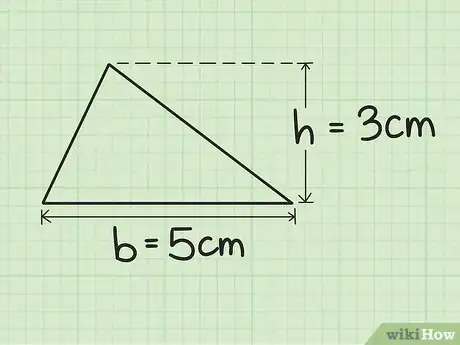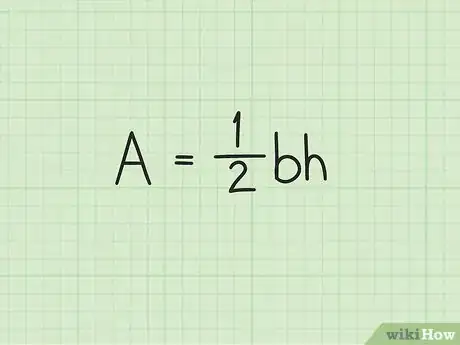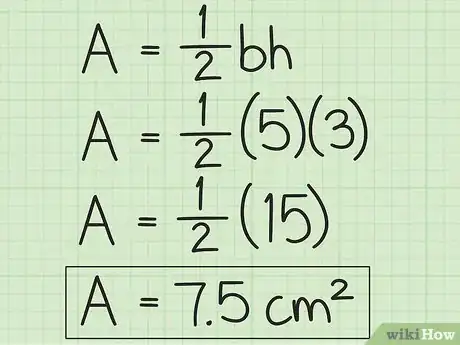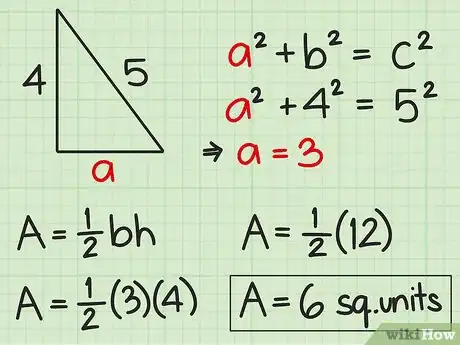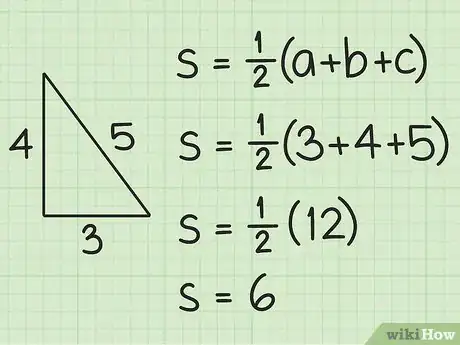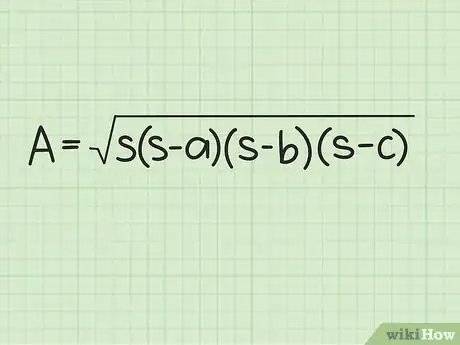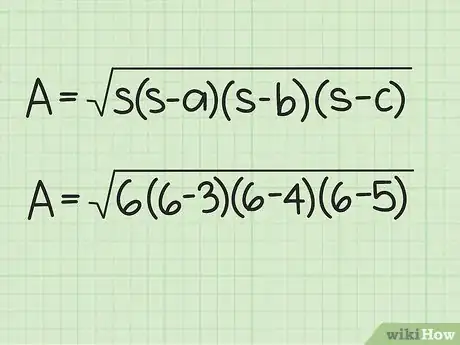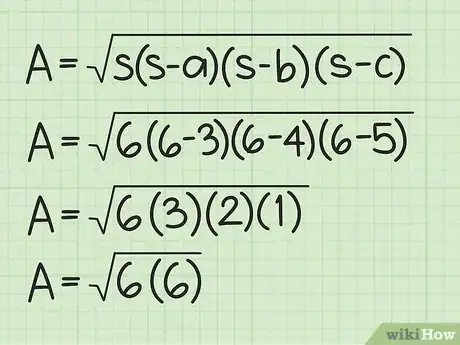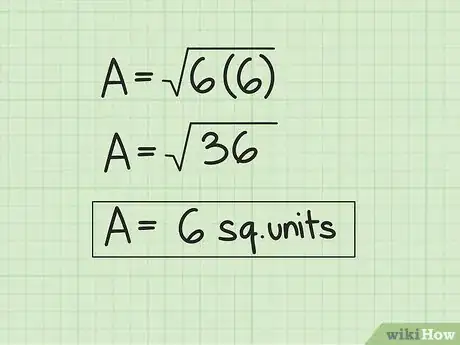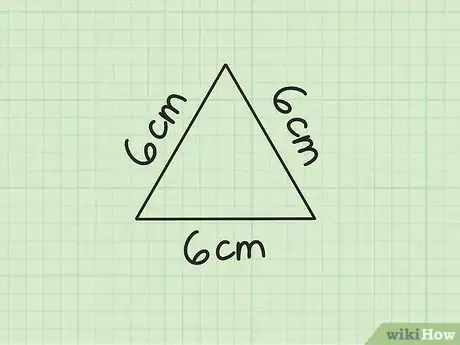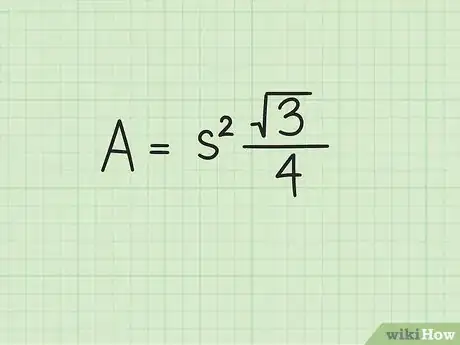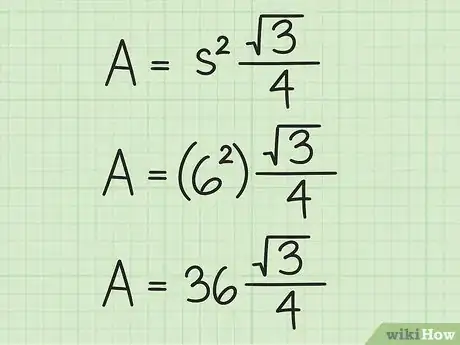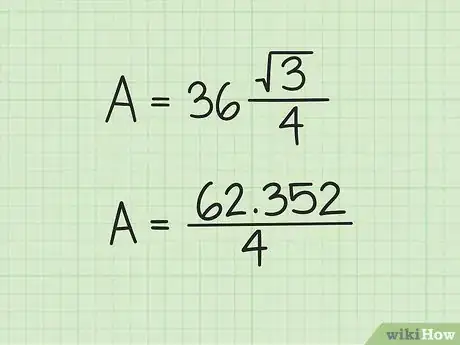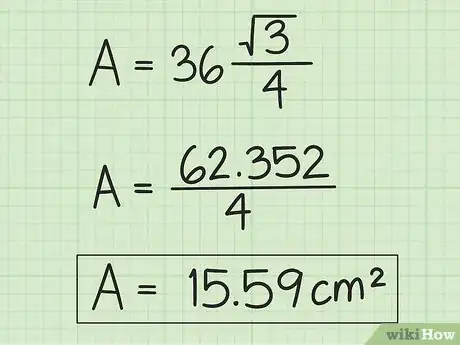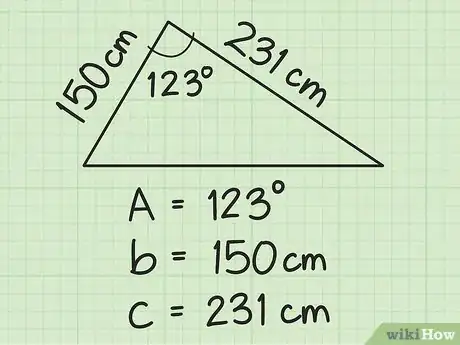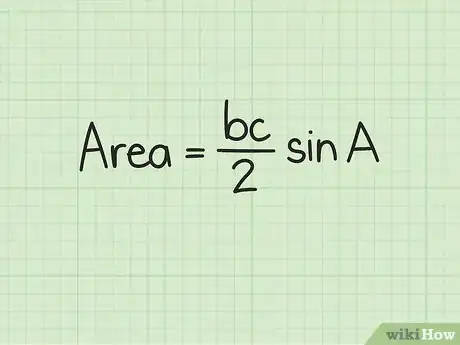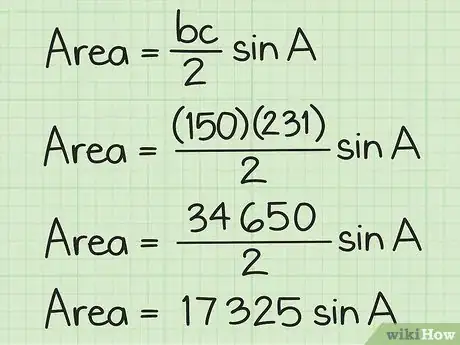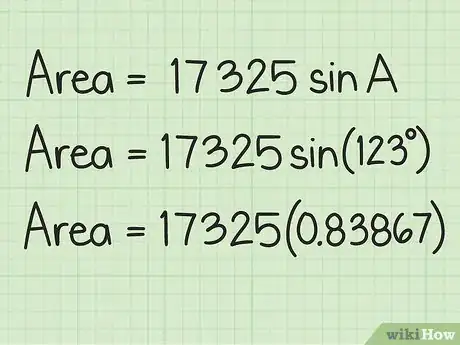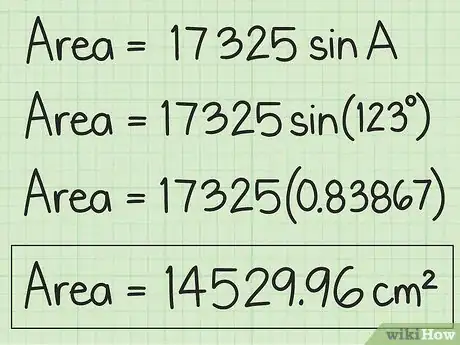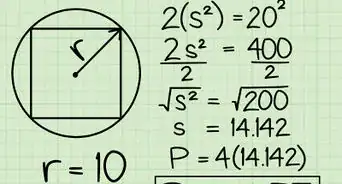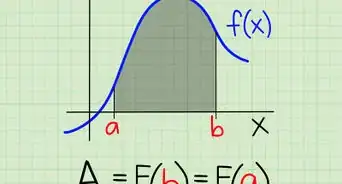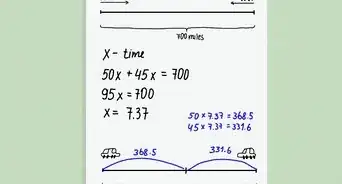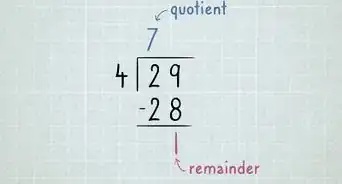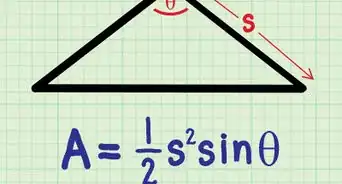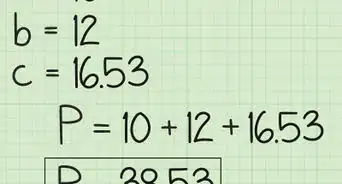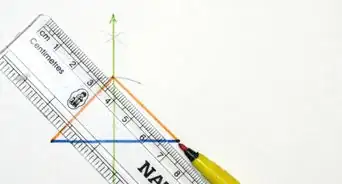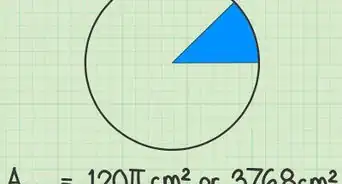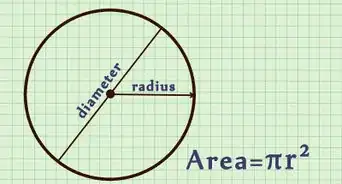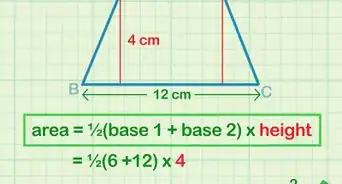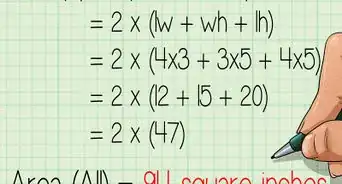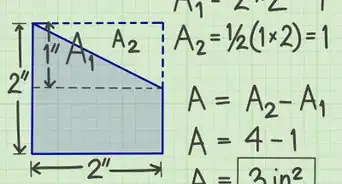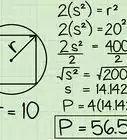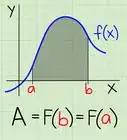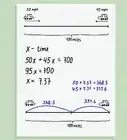This article was co-authored by David Jia. David Jia is an Academic Tutor and the Founder of LA Math Tutoring, a private tutoring company based in Los Angeles, California. With over 10 years of teaching experience, David works with students of all ages and grades in various subjects, as well as college admissions counseling and test preparation for the SAT, ACT, ISEE, and more. After attaining a perfect 800 math score and a 690 English score on the SAT, David was awarded the Dickinson Scholarship from the University of Miami, where he graduated with a Bachelor’s degree in Business Administration. Additionally, David has worked as an instructor for online videos for textbook companies such as Larson Texts, Big Ideas Learning, and Big Ideas Math.
This article has been viewed 3,050,547 times.
The most common way to find the area of a triangle is to take half of the base times the height. Numerous other formulas exist, however, for finding the area of a triangle, depending on what information you know. Using information about the sides and angles of a triangle, it is possible to calculate the area without knowing the height.
Steps
Using the Base and Height
-
1Find the base and height of the triangle. The base is one side of the triangle. The height is the measure of the tallest point on a triangle. It is found by drawing a perpendicular line from the base to the opposite vertex. This information should be given to you, or you should be able to measure the lengths.
- For example, you might have a triangle with a base measuring 5 cm long, and a height measuring 3 cm long.
-
2Set up the formula for the area of a triangle. The formula is , where is the length of the triangle’s base, and is the height of the triangle.[1]Advertisement
-
3Plug the base and height into the formula. Multiply the two values together, then multiply their product by . This will give you the area of the triangle in square units.
- For example, if the base of your triangle is 5 cm and the height is 3 cm, you would calculate:
So, the area of a triangle with a base of 5 cm and a height of 3 cm is 7.5 square centimeters.
- For example, if the base of your triangle is 5 cm and the height is 3 cm, you would calculate:
-
4Find the area of a right triangle. Since two sides of a right triangle are perpendicular, one of the perpendicular sides will be the height of the triangle. The other side will be the base. So, even if the height and/or base is unstated, you are given them if you know the side lengths. Thus you can use the formula to find the area.
- You can also use this formula if you know one side length, plus the length of the hypotenuse. The hypotenuse is the longest side of a right triangle and is opposite the right angle. Remember that you can find a missing side length of a right triangle using the Pythagorean Theorem ().
- For example, if the hypotenuse of a triangle is side c, the height and base would be the other two sides (a and b). If you know that the hypotenuse is 5 cm, and the base is 4 cm, use the Pythagorean theorem to find the height:
Now, you can plug the two perpendicular sides (a and b) into the area formula, substituting for the base and height:
Using Side Lengths
-
1Calculate the semiperimeter of the triangle. The semi-perimeter of a figure is equal to half its perimeter. To find the semiperimeter, first calculate the perimeter of a triangle by adding up the length of its three sides. Then, multiply by .[2]
- For example, if a triangle has three sides that are 5 cm, 4 cm, and 3 cm long, the semiperimeter is shown by:
- For example, if a triangle has three sides that are 5 cm, 4 cm, and 3 cm long, the semiperimeter is shown by:
-
2Set up Heron’s formula. The formula is , where is the semiperimeter of the triangle, and , , and are the side lengths of the triangle.[3]
-
3Plug the semiperimeter and side lengths into the formula. Make sure you substitute the semiperimeter for each instance of in the formula.
- For example:
- For example:
-
4Calculate the values in parentheses. Subtract the length of each side from the semiperimeter. Then, multiply these three values together.
- For example:
- For example:
-
5Multiply the two values under the radical sign. Then, find their square root. This will give you the area of the triangle in square units.
- For example:
So, the area of the triangle is 6 square centimeters.
- For example:
Using One Side of an Equilateral Triangle
-
1Find the length of one side of the triangle. An equilateral triangle has three equal side lengths and three equal angle measurements, so if you know the length of one side, you know the length of all three sides.[4]
- For example, you might have a triangle with three sides that are 6 cm long.
-
2Set up the formula for the area of an equilateral triangle. The formula is , where equals the length of one side of the equilateral triangle.[5]
-
3Plug the side length into the formula. Make sure you substitute for the variable , and then square the value.
- For example if the equilateral triangle has sides that are 6 cm long, you would calculate:
- For example if the equilateral triangle has sides that are 6 cm long, you would calculate:
-
4Multiply the square by . It’s best to use the square root function on your calculator for a more precise answer. Otherwise, you can use 1.732 for the rounded value of .
- For example:
- For example:
-
5Divide the product by 4. This will give you the area of the triangle in square units.
- For example:
So, the area of an equilateral triangle with sides 6 cm long is about 15.59 square centimeters.
- For example:
Using Trigonometry
-
1Find the length of two adjacent sides and the included angle. Adjacent sides are two sides of a triangle that meet at a vertex.[6] The included angle is the angle between these two sides.
- For example, you might have a triangle with two adjacent sides measuring 150 cm and 231 cm in length. The angle between them is 123 degrees.
-
2Set up the trigonometry formula for the area of a triangle. The formula is , where and are the adjacent sides of the triangle, and is the angle between them.[7]
-
3Plug the side lengths into the formula. Make sure you substitute for the variables and . Multiply their values, then divide by 2.
- For example:
- For example:
-
4Plug the sine of the angle into the formula. You can find the sine using a scientific calculator by typing in the angle measurement then hitting the “SIN” button.
- For example, the sine of a 123-degree angle is .83867, so the formula will look like this:
- For example, the sine of a 123-degree angle is .83867, so the formula will look like this:
-
5Multiply the two values. This will give you the area of the triangle in square units.
- For example:
.
So, the area of the triangle is about 14,530 square centimeters.
- For example:
Practice Problems
Community Q&A
-
QuestionHow do I find the length and width of a triangle before calculating the area?
 Community AnswerIt should be included in the problem. If it is a right triangle, use the Pythagorean Theorem (A squared + B squared = C squared) to find the missing side.
Community AnswerIt should be included in the problem. If it is a right triangle, use the Pythagorean Theorem (A squared + B squared = C squared) to find the missing side. -
QuestionHow can I calculate the area of an equilateral triangle?
 Community AnswerIf you know the base and height, you can use the standard formula A = 1/2bh. If you know the three side lengths, you can use the method for equilateral triangles described in this article.
Community AnswerIf you know the base and height, you can use the standard formula A = 1/2bh. If you know the three side lengths, you can use the method for equilateral triangles described in this article. -
QuestionHow can I find the area of an isosceles right triangle?
 Community AnswerThe legs must be the sides that are equal, so you just square the length of one of the legs and divide by 2. If you only have the hypotenuse: since isosceles right triangles come in the ratio 1-1-(square root of 2), you just divide the hypotenuse by sqrt(2), square what you get, and divide by 2.
Community AnswerThe legs must be the sides that are equal, so you just square the length of one of the legs and divide by 2. If you only have the hypotenuse: since isosceles right triangles come in the ratio 1-1-(square root of 2), you just divide the hypotenuse by sqrt(2), square what you get, and divide by 2.
References
- ↑ https://www.mathsisfun.com/algebra/trig-area-triangle-without-right-angle.html
- ↑ http://mathworld.wolfram.com/Semiperimeter.html
- ↑ http://mathworld.wolfram.com/HeronsFormula.html
- ↑ http://www.mathopenref.com/equilateral.html
- ↑ http://www.mathwords.com/a/area_equilateral_triangle.htm
- ↑ http://www.mathopenref.com/adjacentsides.html
- ↑ https://www.mathsisfun.com/algebra/trig-area-triangle-without-right-angle.html
About This Article
To calculate the area of a triangle, start by measuring 1 side of the triangle to get the triangle's base. Then, measure the height of the triangle by measuring from the center of the base to the point directly across from it. Once you have the triangle's height and base, plug them into the formula: area = 1/2(bh), where "b" is the base and "h" is the height. To learn how to calculate the area of a triangle using the lengths of each side, read the article!
